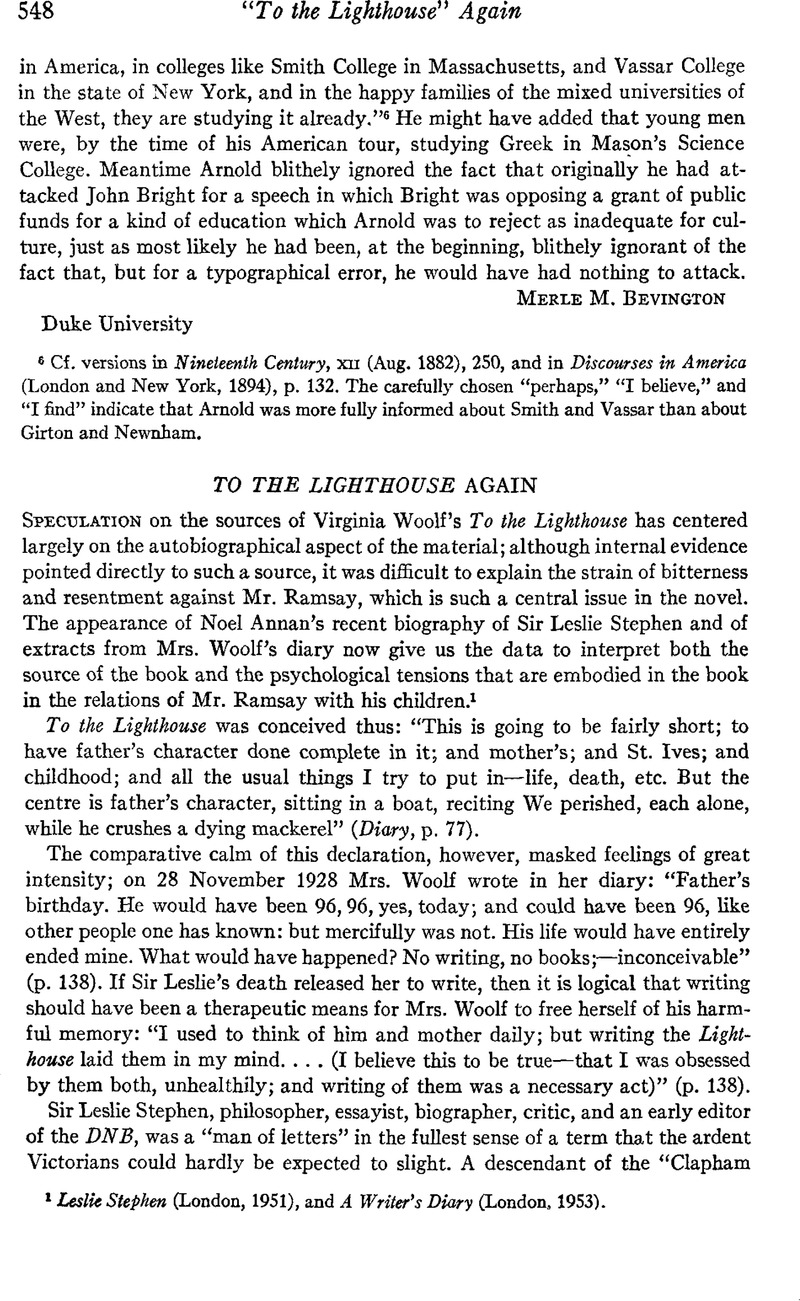Article contents
To the Lighthouse Again
Published online by Cambridge University Press: 02 December 2020
Abstract

- Type
- Article Commentary
- Information
- Copyright
- Copyright © Modern Language Association of America, 1955
References
1 Leslie Stephen (London, 1951), and A Writer's Diary (London, 1953).
2 Some Early Impressions (London, 1924), p. 15.
3 Leslie Stephen (Cambridge, 1937), p. 30.
4 The particular issues involved in Sir Leslie's “tyranny” are, of course, obscure. He forbade his daughters to smoke, and Virginia, at least, retaliated when she was outside his control by resorting to cigars, even long after his death. His strong emphasis on chastity is countered in A Room of One's Own (New York, 1929), pp. 87 and 185, and in Three Guineas, where she enjoins spiritual and mental chastity. Both these books, which her diary assures us were written out of deeply personal feelings, are in part a reaction against, and in part a curiously distorted continuation of, her father's values. One must keep in mind, too, that Mrs. Woolf 's tribute to her father, published in the Times in 1932 and subsequently revised and printed posthumously in The Captain's Death Bed, gives another side of the picture.
5 Some Early Impressions, p. 102.
6 Cf. F. W. Maitland, The Life and Letters of Leslie Stephen (London, 1906), p. 48: “Leslie became thick with Joseph Wolsteholme, who, to his other attractive qualities, added the power of reciting poetry, not figuratively by the yard, but literally by the mile, along all the roads round Cambridge.” Wolsteholme is Mr. Carmichael of To the Lighthouse: see Annan, p. 55, and note on p. 294.
7 The children's habit of laughing at Sir Leslie in his presence was developed late in his life after he had become deaf; see Annan, pp. 101–102. In To the Lighthouse, which depicts an earlier period, the children save their laughter for the nursery, where they indulge it unrestrainedly.
8 There were eight children at St. Ives, if one counts all the children from both his marriages and both of his second wife's marriages.
9 Desmond MacCarthy on pp. 39–41 quotes a corroboratory passage from the “Mausoleum Book,” a letter Sir Leslie wrote to his children after the death of Julia.
10 See Maitland, p. 431, for a description of Julia Stephen's nursing activities at St. Ives.
11 The Death of the Moth (New York, 1942), p. 237.
- 1
- Cited by




